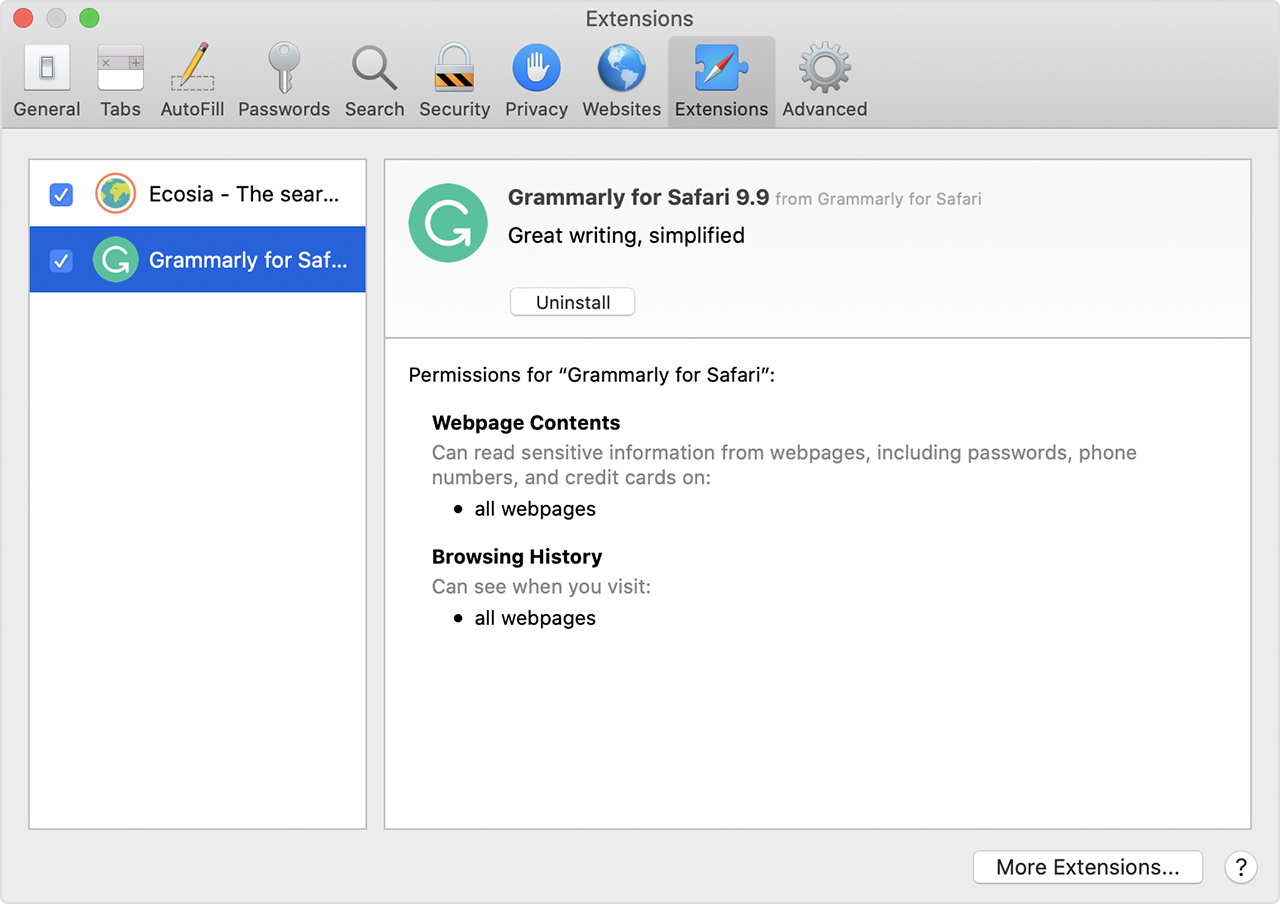Customize your browsing experience by getting Safari extensions from the Mac App Store. Get extensions to customize Safari on Mac. To browse the Safari User Guide, click Table of Contents at the top of the page. If you need more help, visit the Safari Support website. Safari User Guide. A QuickLook plugin for Mac OS X 10.9 that creates a thumbnail of a video as an icon instead of a generic one. When you trigger QuickLook it displays the thumbnail of the video along with the video information such as its title, size, resolution, and more. This is the web plugin for Mac OS. After installation, you will be able to live view most of Hikvision DVR/IPC/Encoder on Safari for Mac. 1 Version: V3.0.6.23 build20180123. 2 Support Mac OS 10.8 or later version 3 Support Safari for Mac (Safari 8 or later version is recommended.) 4 Please close the web browsers while you are installing the plug-in. Silverlight means Business. SAP is the world's largest business software company. For their Business ByDesign product, SAP utilized Silverlight's powerful.NET programming model and familiar Visual Studio tools to rapidly develop a visually compelling and easy to use application.
This article is adapted from Josh Aas's blog post Writing an NPAPI plugin for Mac OS X.
Before you go on reading this article, you may wish to grab the sample code located here, as it will be referenced during this tutorial. The sample is posted under a BSD-style license that means you can use it for anything, even if you don't plan to release your source code.
Gimp Plugins For Mac Os X

Getting started
If you check out the Mozilla source code in Mac OS X, you can simply open BasicPlugin.xcodeproj in Xcode, click Build, and you're done. Xcode will create a 'build' directory next to the project file, and if you built it in release mode, that folder in turn contains a 'Release' directory with the plugin inside it.
To install the plugin, just copy it into one of these two locations:
- /Library/Internet Plugins/
- ~/Library/Internet Plugins/
From this point, you can simply modify the sample plugin to do whatever you want.

Notes and tips
Mac Os X Plugins
This section provides some additional information that may be helpful if you're trying to get a plugin building on your own.
Info.plist
The plugin communicates its MIME and filename extension information using the Info.plist file, which is packaged in the plugin bundle. The plugin also communicates its bundle type in that file, under the key CFBundlePackageType; the type is 'BRPL'. If the type isn't an NPAPI plugin type, the bundle won't load as an NPAPI plugin. You can always just use 'BRPL'.
XP_MACOSX
It's important to define the GCC preprocessor definition XP_MACOSX to 1; this is used by the NPAPI headers to build properly on Mac OS X. If you don't define it, they won't be interpreted correctly. This is easy to miss in the sample project's build settings.
Symbol visibility
Symbol visibility is a common problem for people trying to get NPAPI plugins working. Some symbols must be visible as standard C symbols so the browser can find them, which means they need to be prefixed by an underscore, and must not have the C++ obfuscation that is generated by the C++ compiler.
The three symbols that must always be visible are:

NP_Initialize()NP_GetEntryPoints()NP_Shutdown()
The sample plugin is written entirely in C, using a standard Xcode build configuration, so by default all of its symbols are C-style and visible.
If you want to implement your plugin in C++ or Objective-C++, you need to tell the compiler to export them in C format by using extern 'C' in the header, like this:
You can check to be sure your symbols are visible and in standard C format by using the nm utility provided among the Mac OS X developer tools:
See also
Original Document Information
- Author(s): Josh Aas
- Last Updated Date: October 24, 2008
